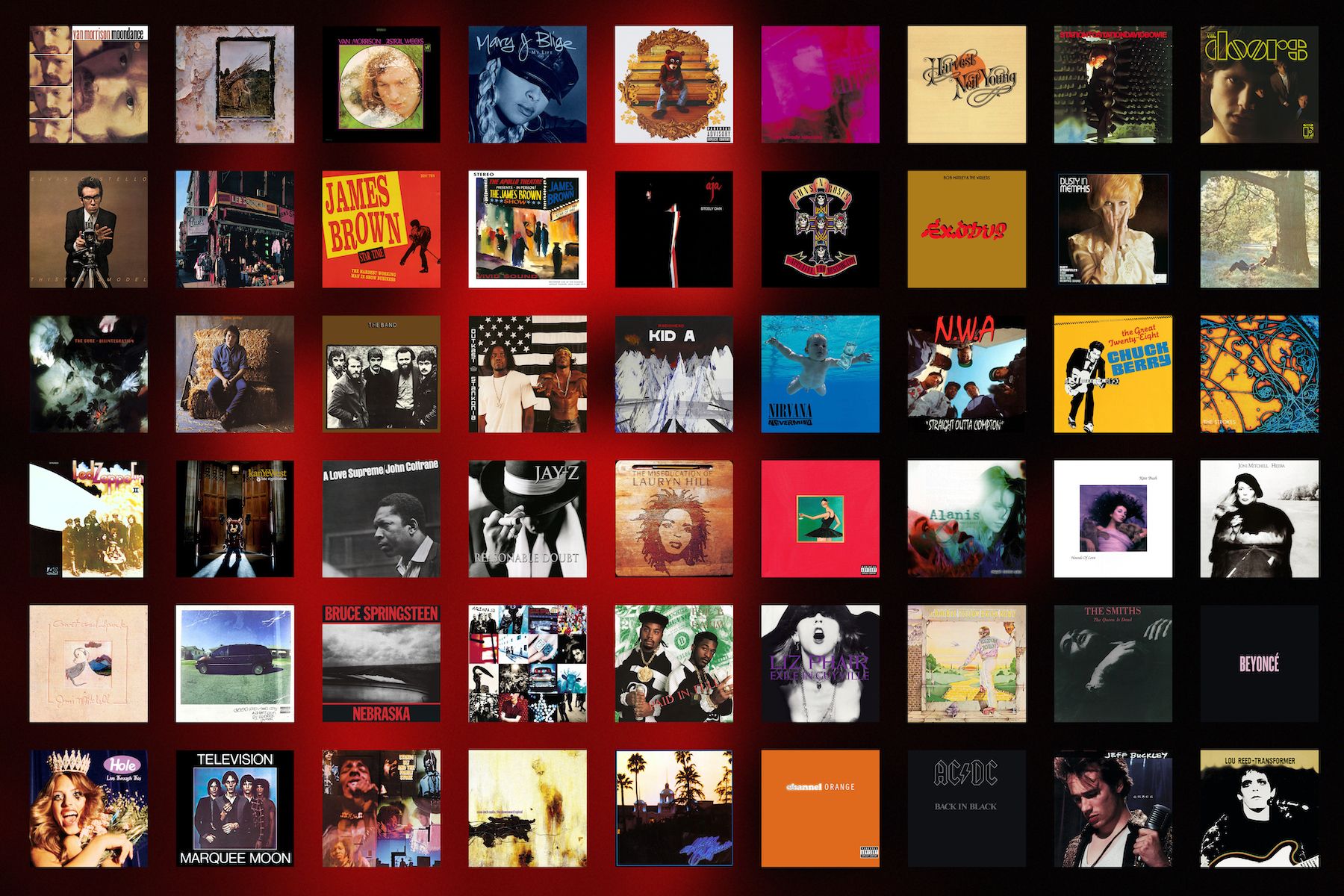Last September Rolling Stone remade their list of the 500 Greatest Albums of All Time. This was the first considerable change to the list they first published in 2003 (their editors consider the 2012 version a "slight update") and it seemed to include important changes to the canon of popular music and the criteria they use to assess it. To get a clearer picture of these changes, I compared the 2020 list to the 2012 version and visualized a few interesting insights.
To view the full data set and analysis, click here.
Genre analysis: Hip Hop represents, Rock still dominates

Despite losing more entries from the 2012 list than any other genre, Rock still composes 54% of the entire list. Hip Hop (15%), Electronic (11%), and Funk/Soul (10%) account for the next highest shares.
Previous versions of the 500 gave scant representation to Jazz, Blues, Reggae, and World Music, which is surprising given the essential role these genres and their artists play in American music. This is (disappointingly) still true of the 2020 edition.

Rock suffered a net loss of 62 (!) entries since this list was last published, far more than any other genre. It seems like most of these newly open slots went to Hip Hop (+40) and Electronic (+17) albums. Considering Hip Hop has been the dominant form of American popular music for nearly two decades, this is a welcome change.

Things get interesting when you look at the percentage change of particular genres. Looking at the data this way shows just how dominant and resilient Rock is on this list: losing 62 entries only decreased its total by 18%. The opposite is true of Blues which lost 6 of just 9 entries, shrinking by 67%.

Many albums saw their rank on the list change, sometimes dramatically. When you look at this data by genre, you can see which genres, on average, gained and which lost ground.
On top of gaining 40 entries, the average rank of Hip Hop albums on the list improved by 74 positions, the most of any genre. The average Electronic release climbed 25 places higher.
The average rank of Jazz, Blues, Funk/Soul and Pop releases all fell.
Decade analysis: That 70s list

The 70s still makes up more of the list than any other decade with 32% of entries and the rest of the list is divided up between all others.

The 60s and 70s lost more entries than any other decade, losing 33 and 32 entries respectively. The 1990s (+34) and 2010s (+33) seem to have filled most of those empty slots, mirroring the shift from Rock to Hip Hop/Electronic we noticed above.

The average rank of entries from the 50s and 60s fell by 67 positions. Releases from 1980 onward, on average, climbed the list with the 90s climbing highest (+53). Interestingly, the average rank of releases from the 70s was mostly unchanged.

Another interesting point: it looks like there's been a noteworthy reassessment of which albums are worthy of inclusion from each decade, with nearly 40% of entries turning over (i.e., removed entries / ((# of 2012 entries + # of 2020 entries) / 2).
The winners
While genre and decade analysis is useful for identifying big picture trends, I had a lot of fun seeing how particular artists and albums fared from one list to the next.

The Beatles still run the list with 10 entries.

D'Angelo's Voodoo jumped the most, 453 positions, and now occupies the 28 spot.
To Pimp a Butterfly by Kendrick Lamar is the highest ranked album that was not included on the 2012 list at #19.
The following artists all had 3 albums enter the 500: Kanye West, Kendrick Lamar, Fiona Apple, Blondie.
The losers

Back to Mono (1958-1969) by Phil Spector fell the furthest, down 462 slots, since the list was last published and now sits at #489.
The following artists all had 3 albums drop off the 500: The Police, U2, The Who, The Smiths, Bruce Springsteen, Elton John.
Final thoughts
While the 2020 list appears to better reflect the state of modern popular music and survey a more diverse electorate, the list still biases heavily toward 70s (dad) Rock, often at the expense of important genres that define American popular music, like Jazz and Blues. This is unsurprising coming from the Rolling Stone, whose heyday is defined by 70s Rock, but it's disappointing when you consider how diverse the spectrum of American music is and the worthy albums that didn't make the cut.
Approach
To compare and analyze the lists, I needed a clean, standardized set of data. To get this, I compiled the 2012 and 2020 versions of the list in Google Sheets and used Discogs to populate artist and album information.
If an album belonged to multiple genres, I used only the first returned by the Discogs API. This helped simplify the analysis and often the genre first returned appeared (to me) most appropriate. However, this decision meant certain genres went undercounted. For example, Pop entries are undercounted as Rock is typically the genre first returned for a release that belongs to both.
Sub-genres (i.e., styles), while more interesting and specific than genres, were too varied to provide useful trend insights.

